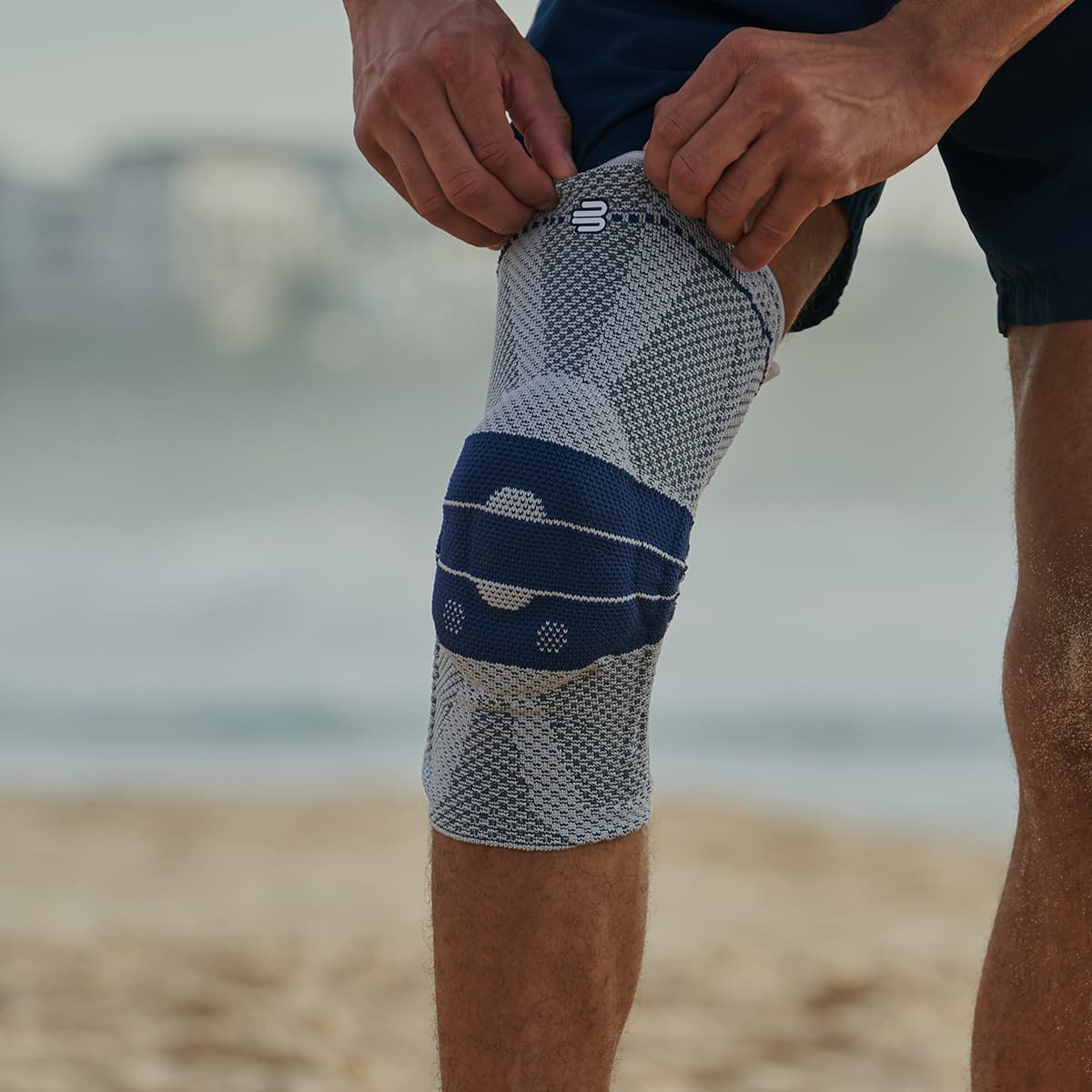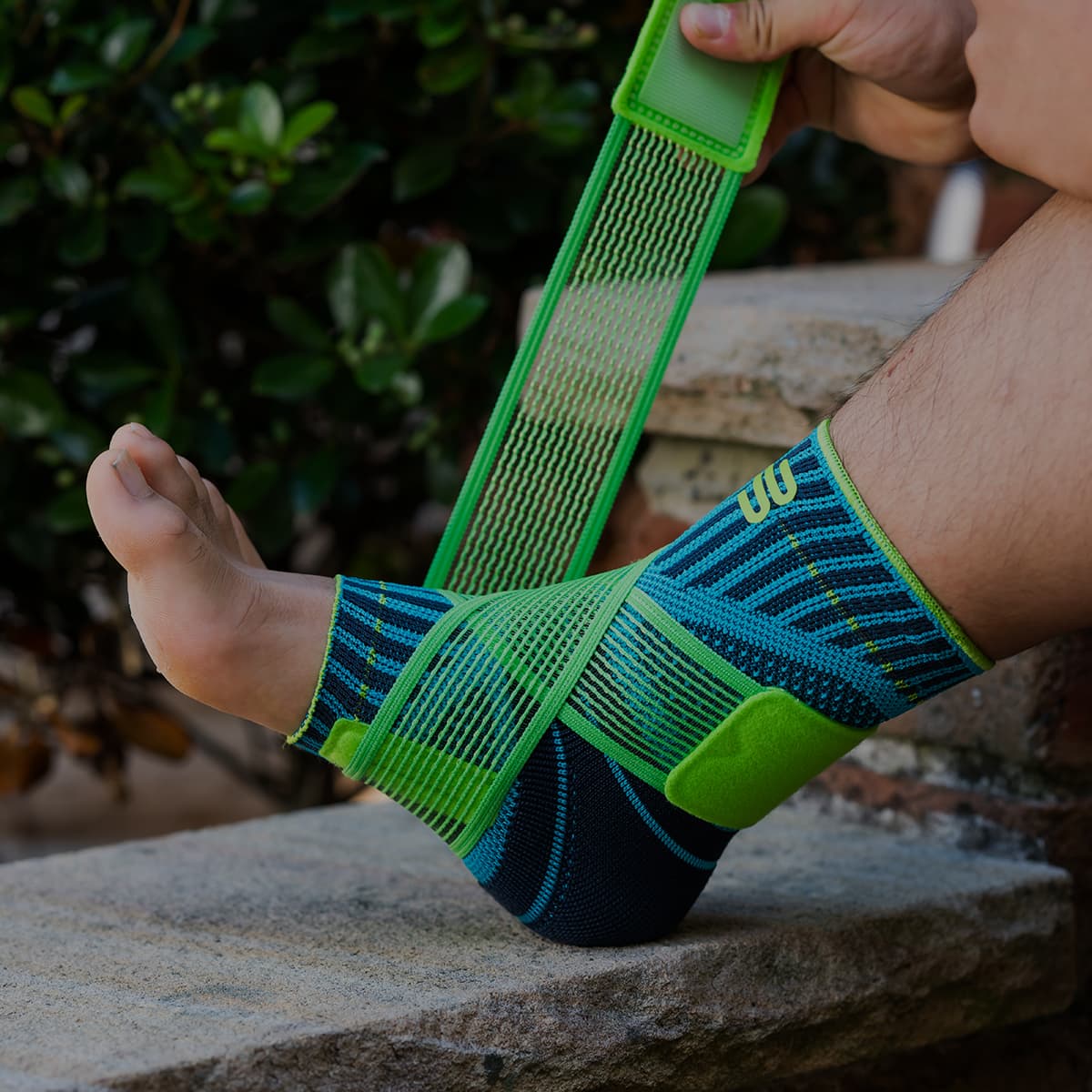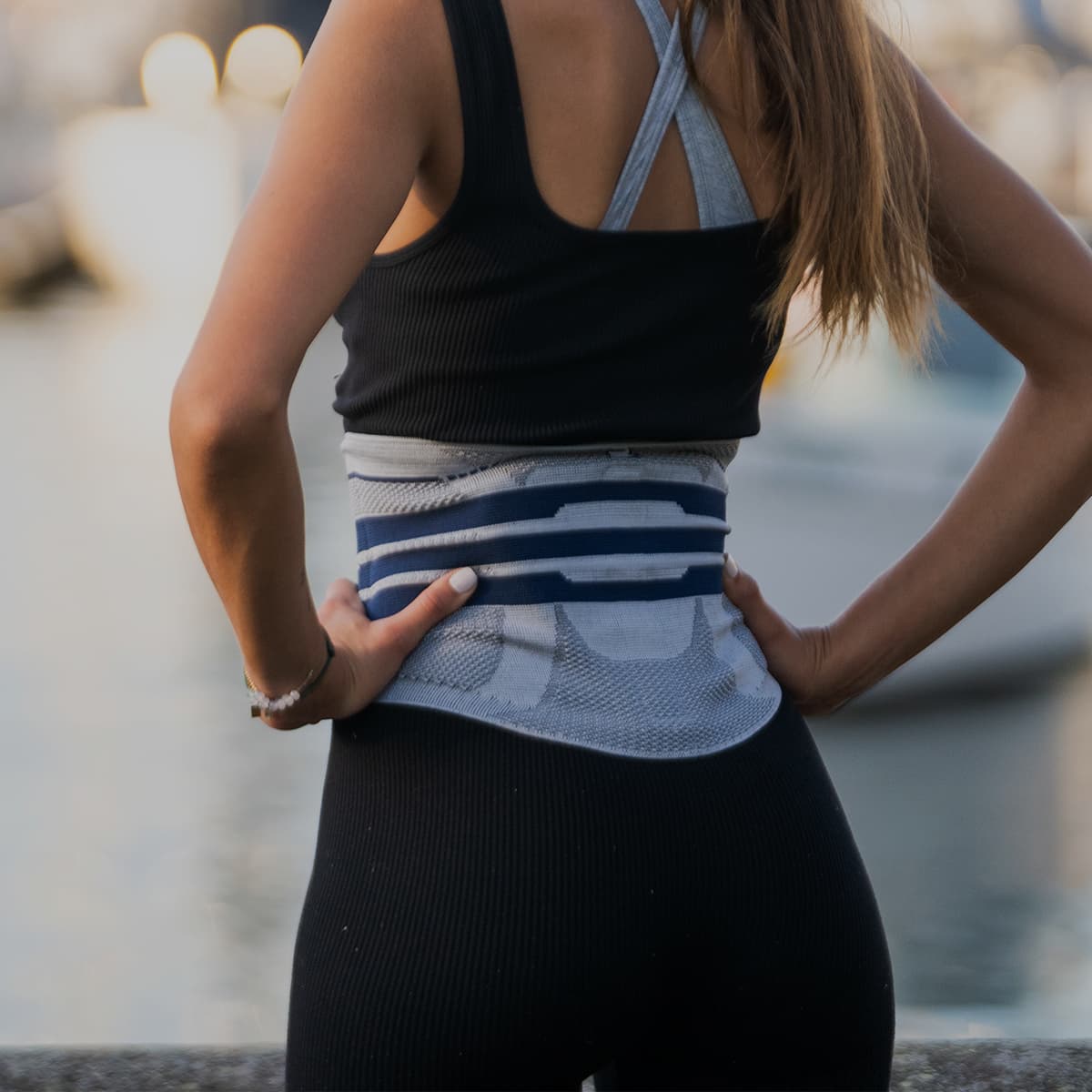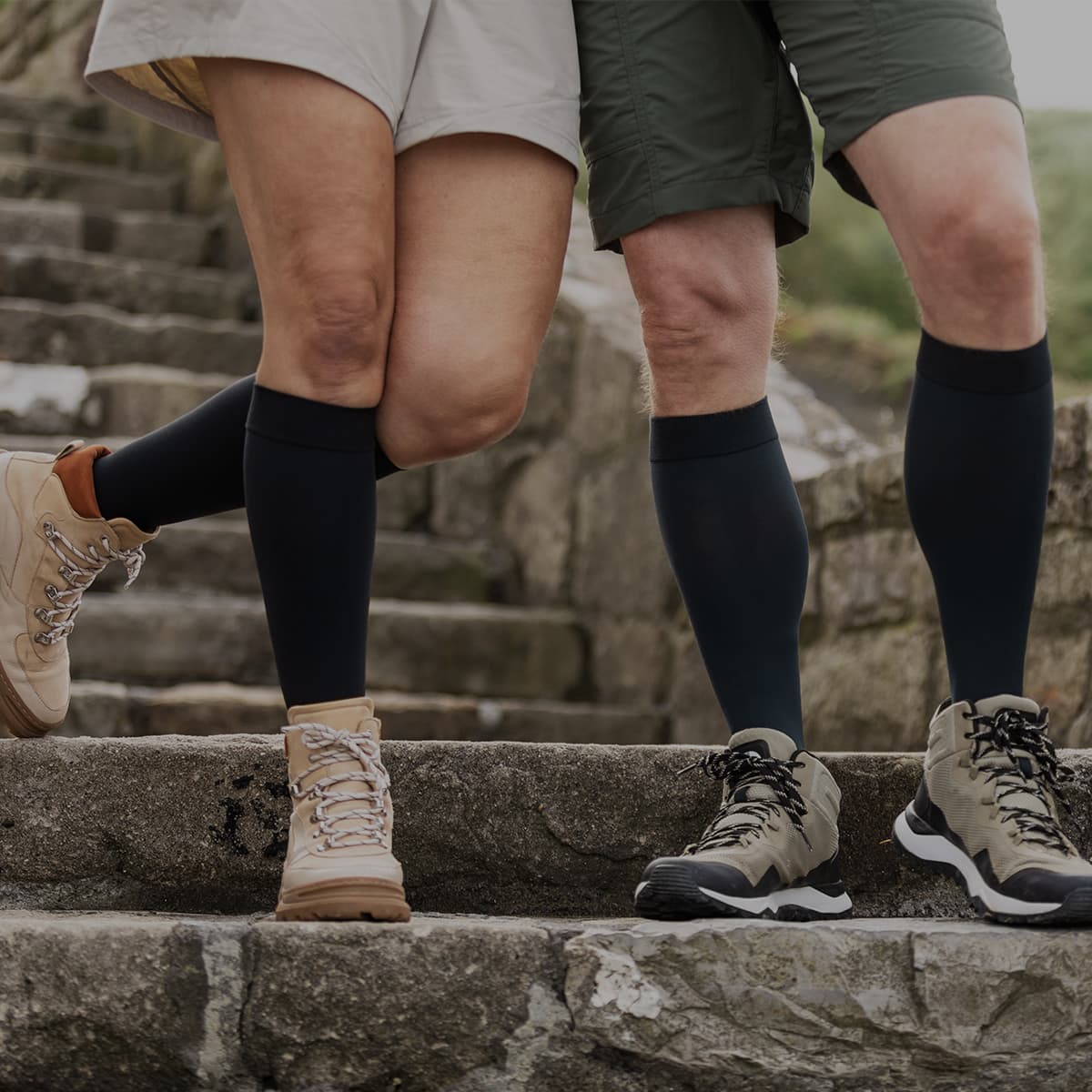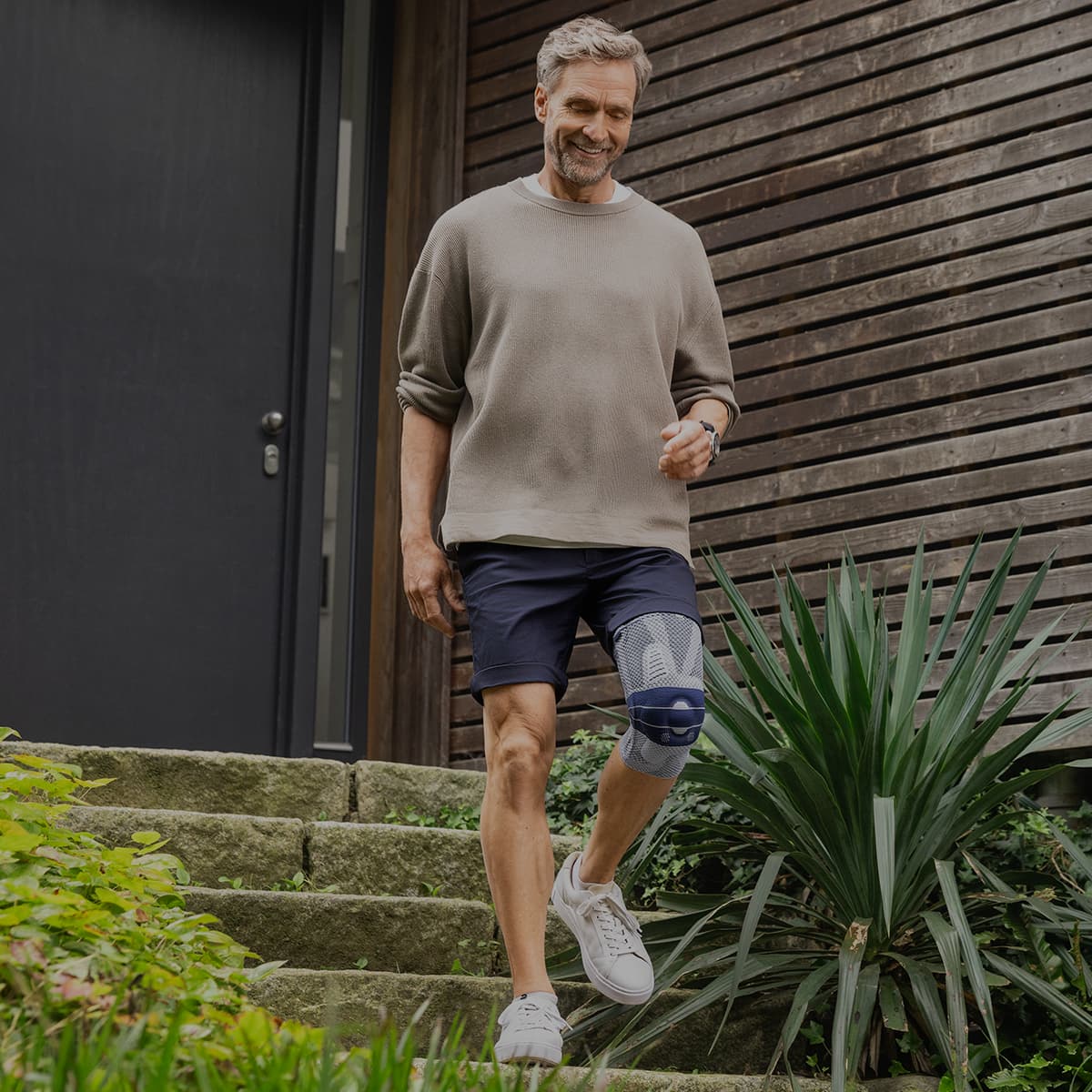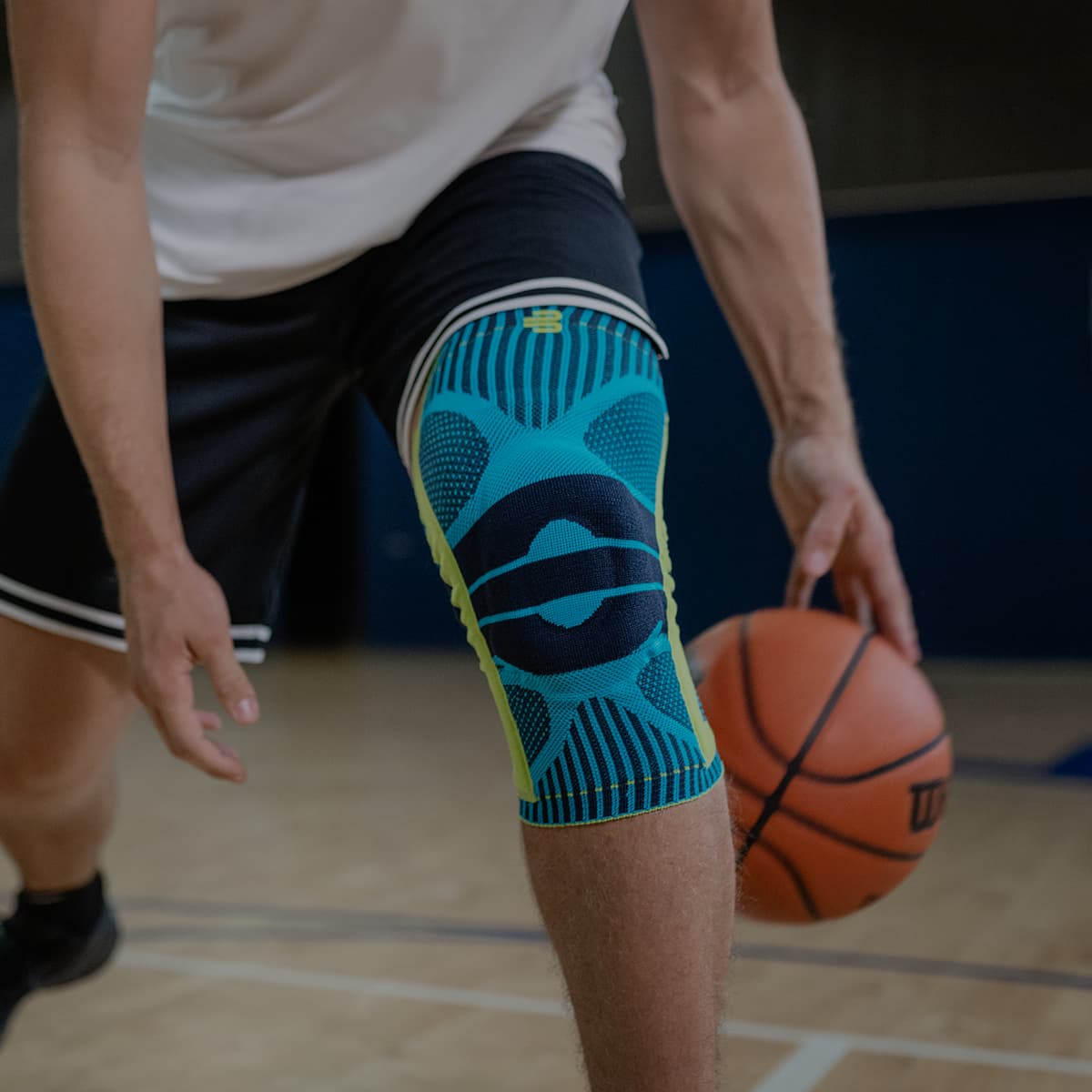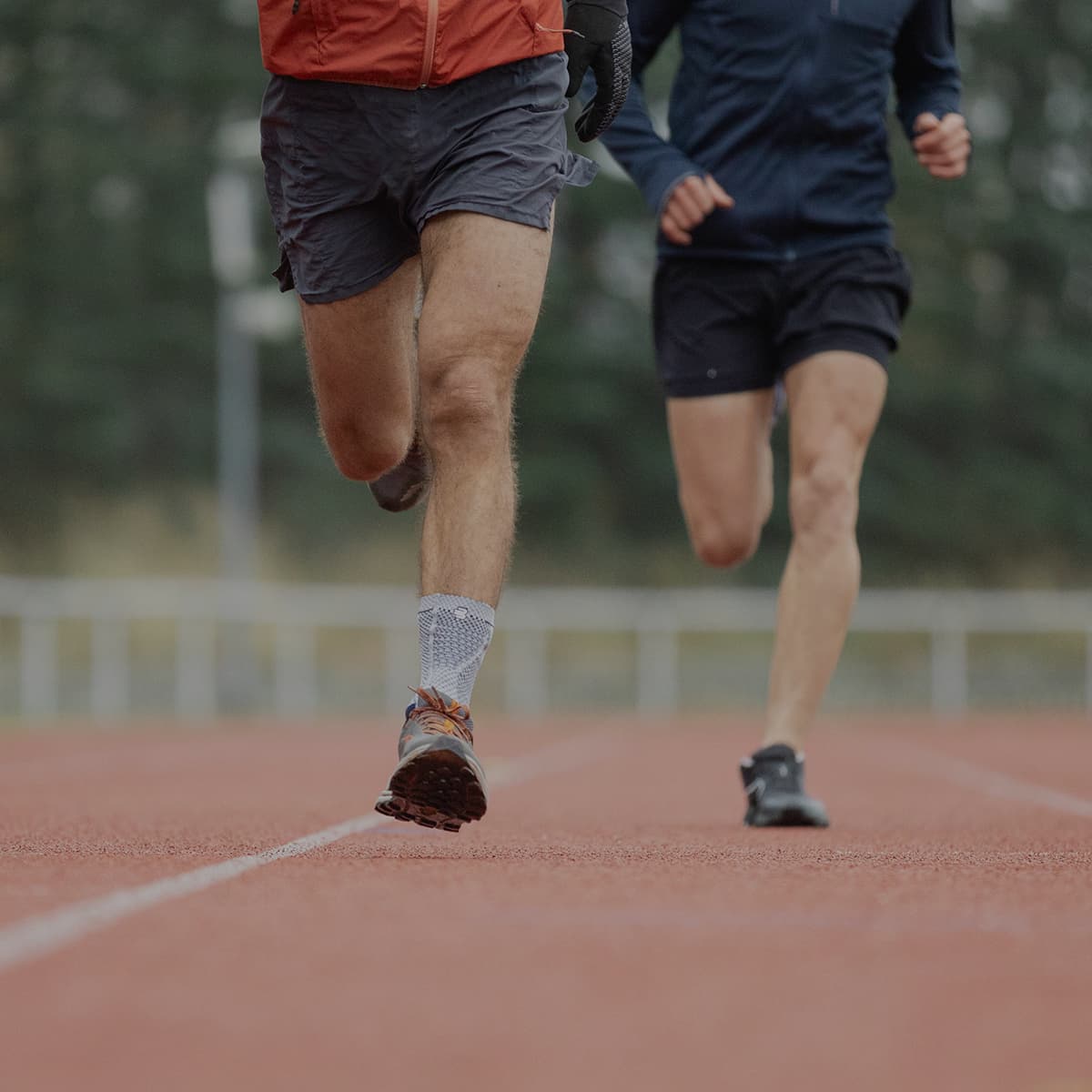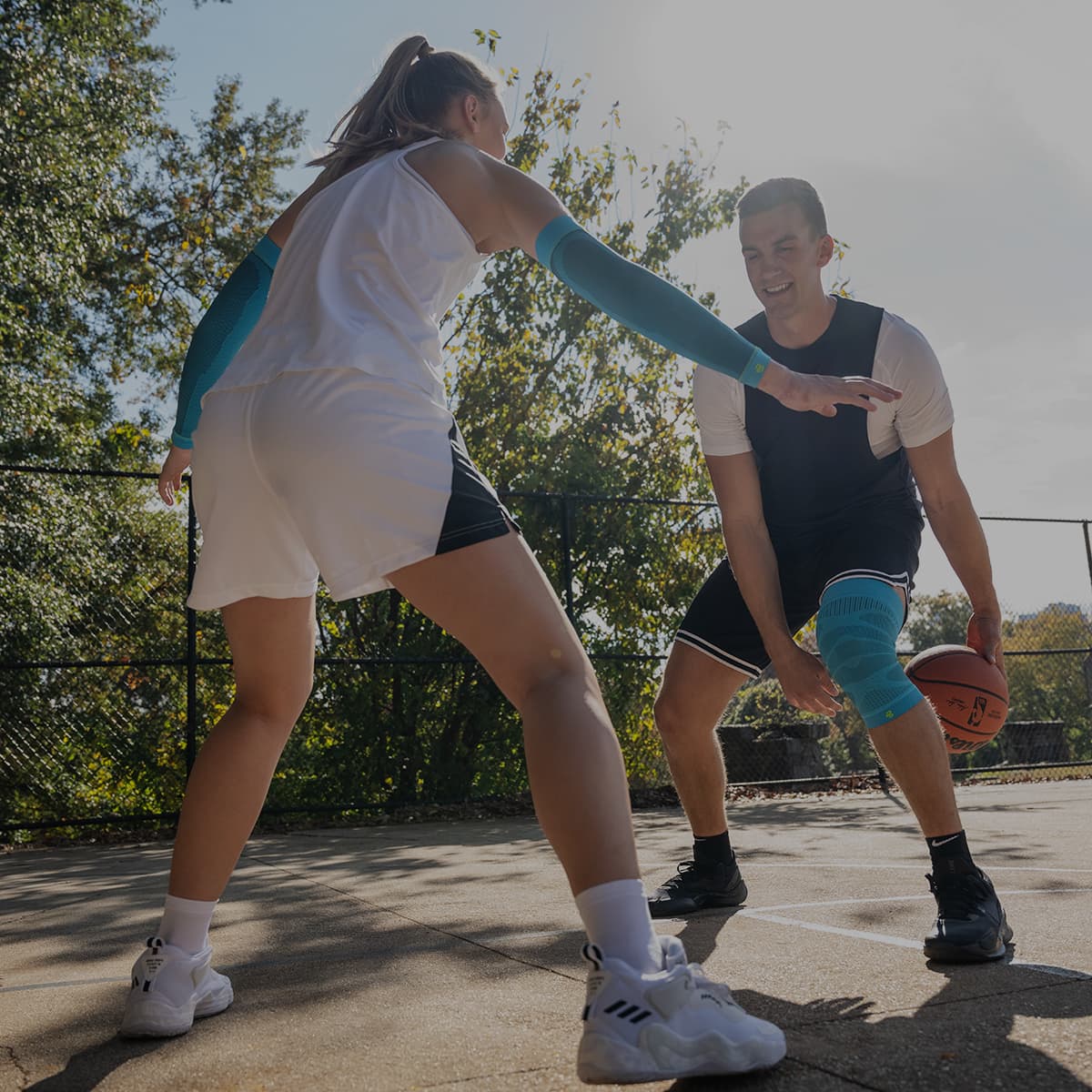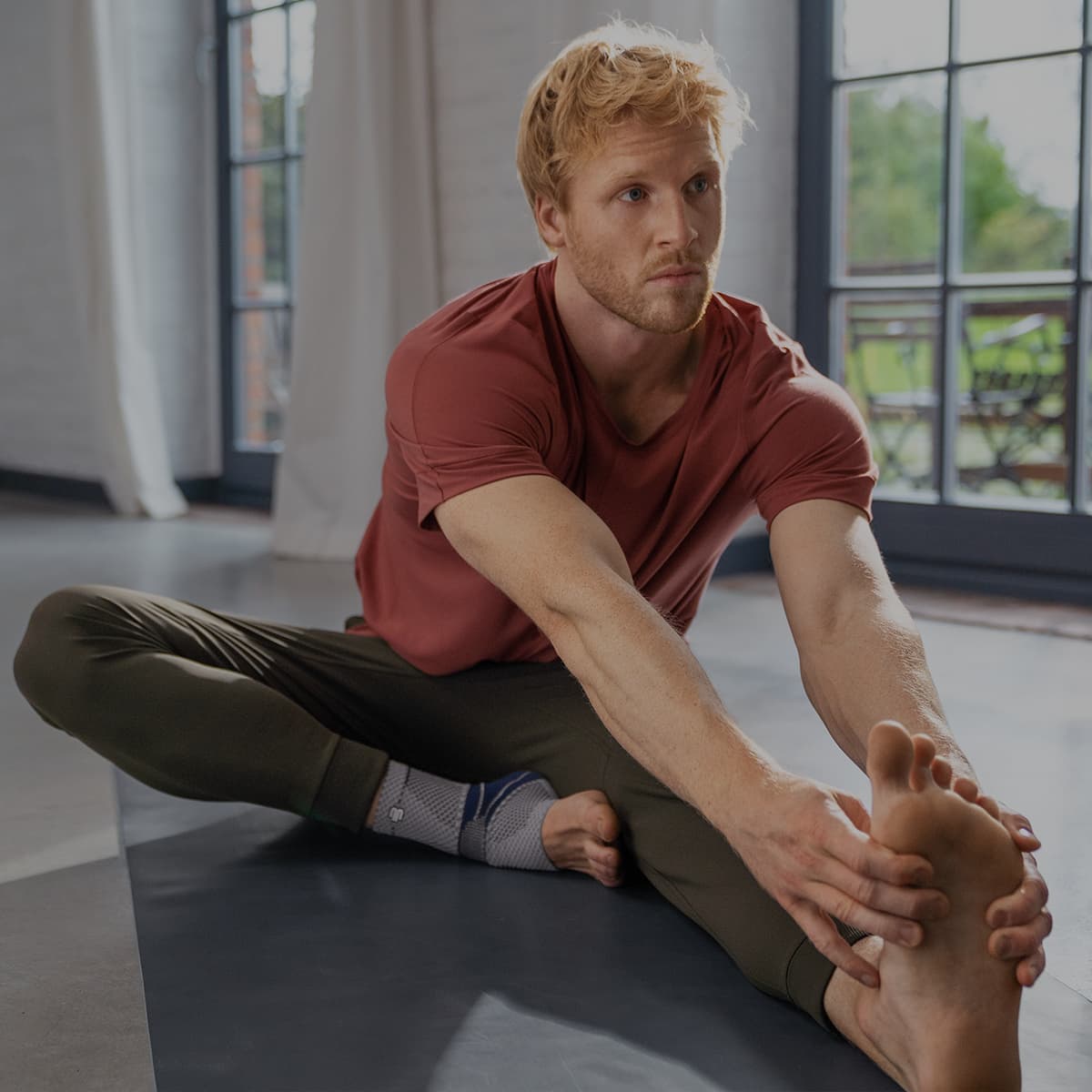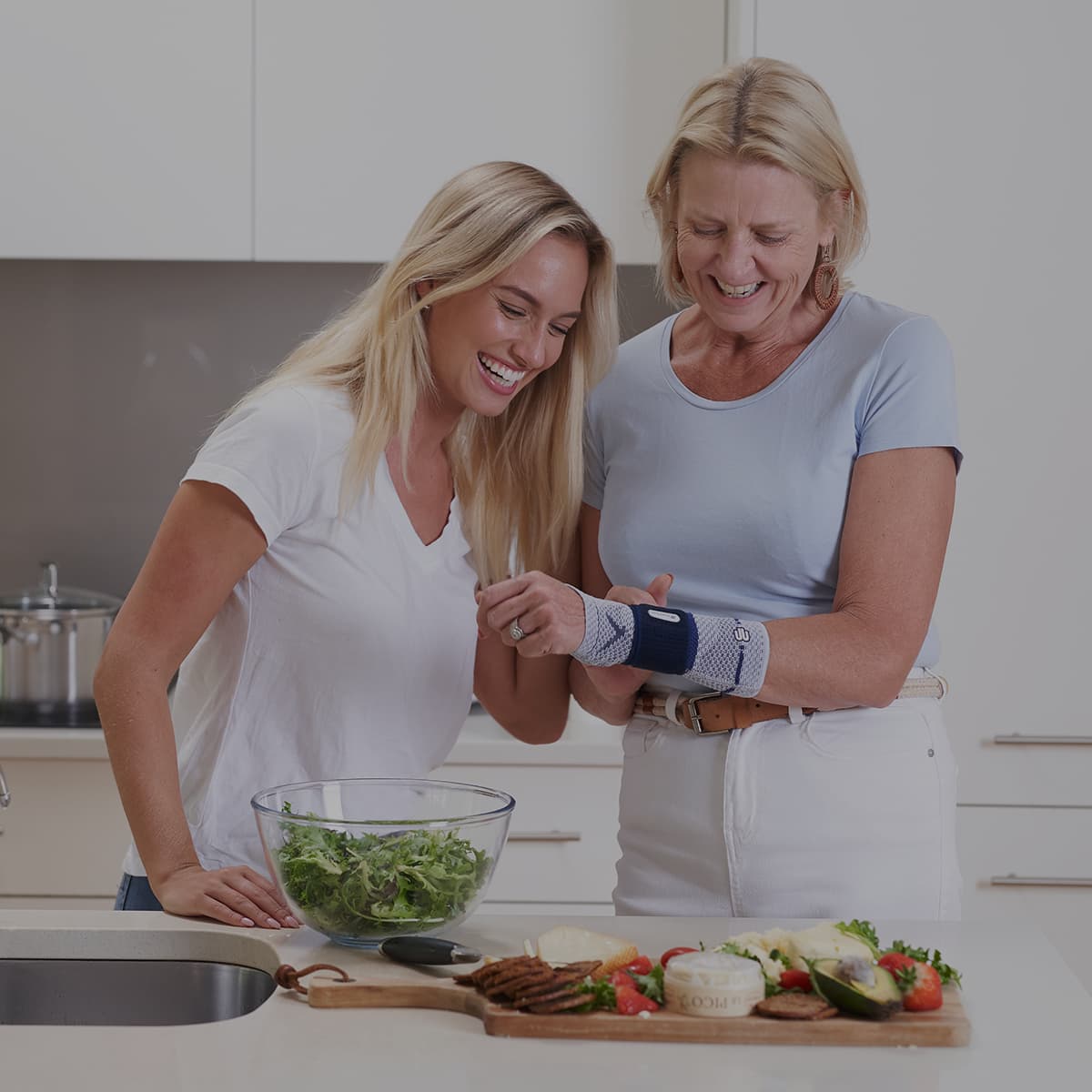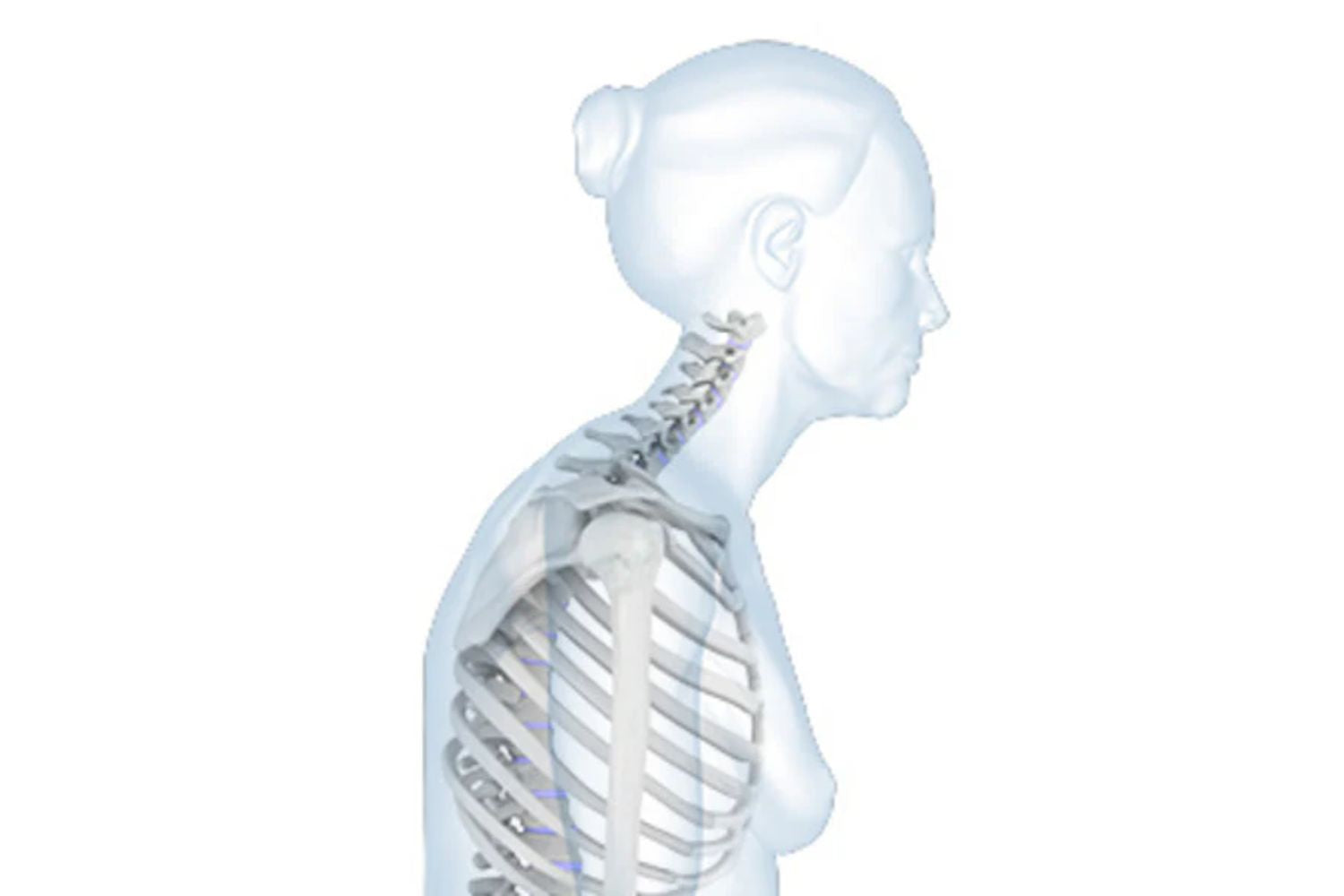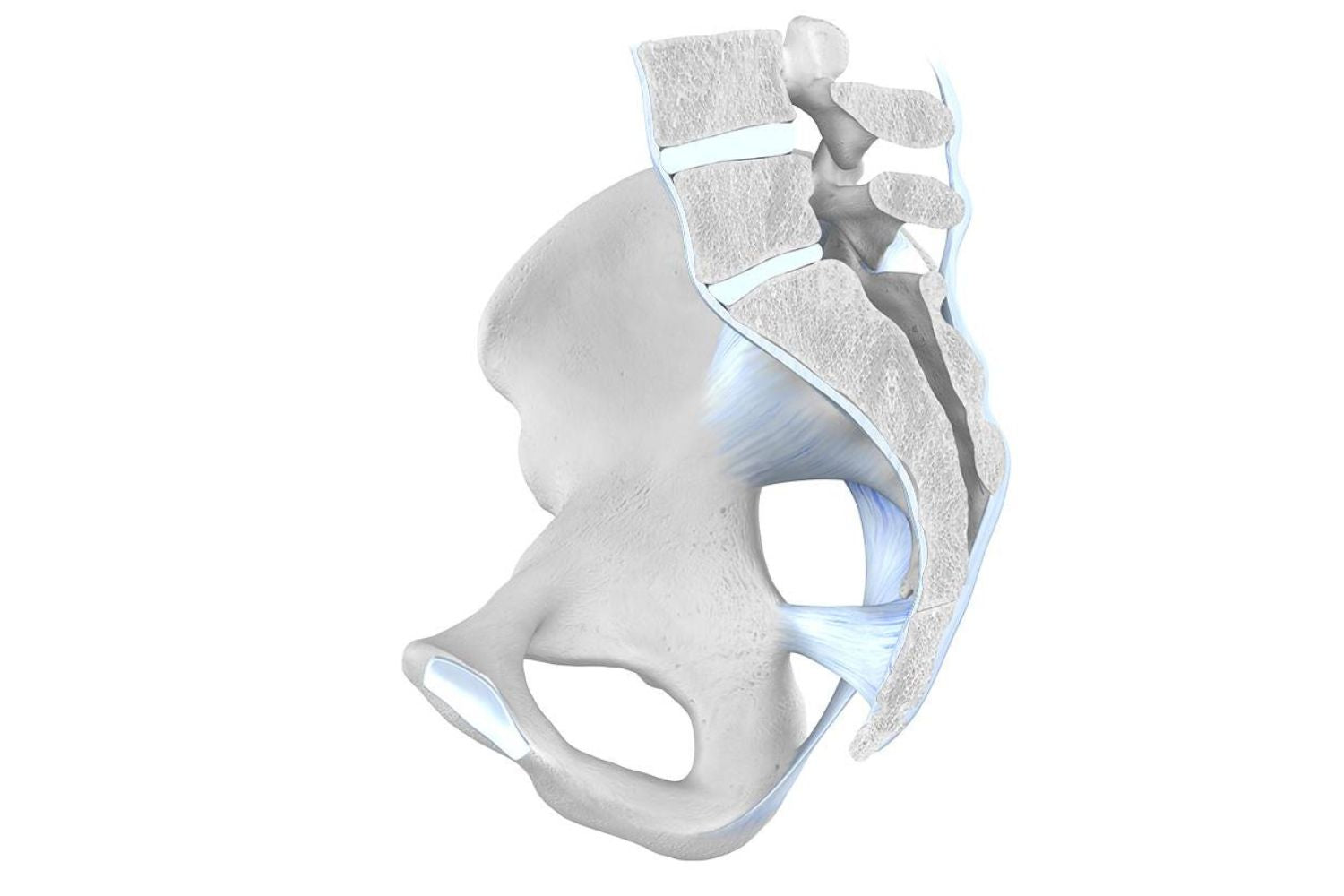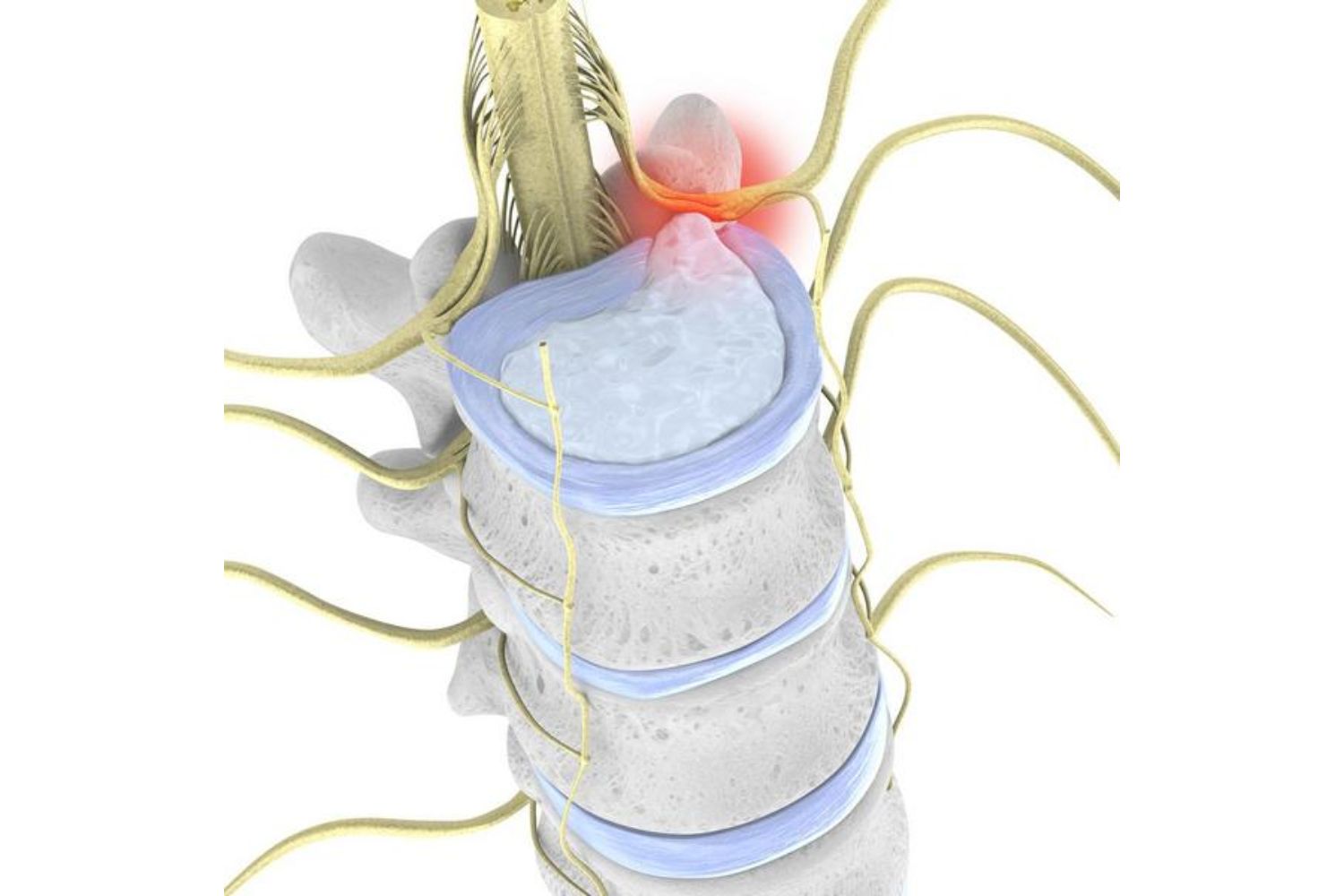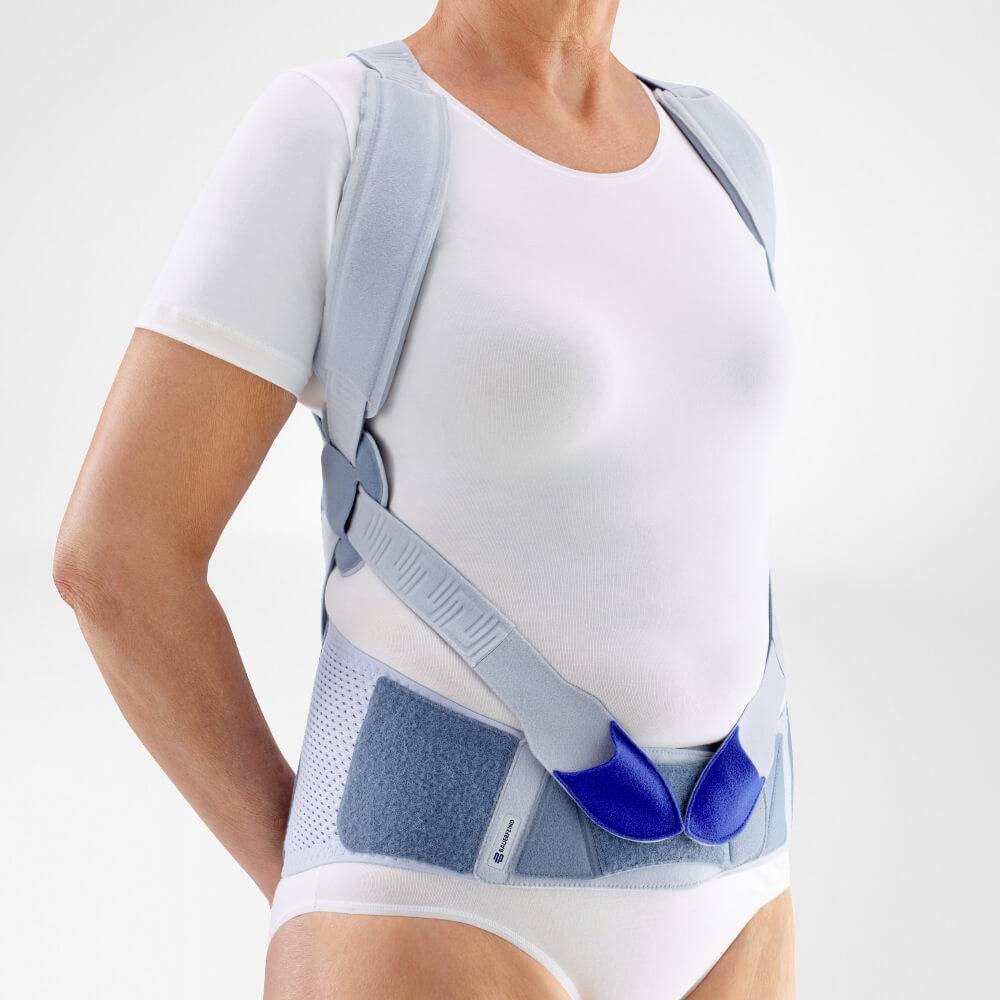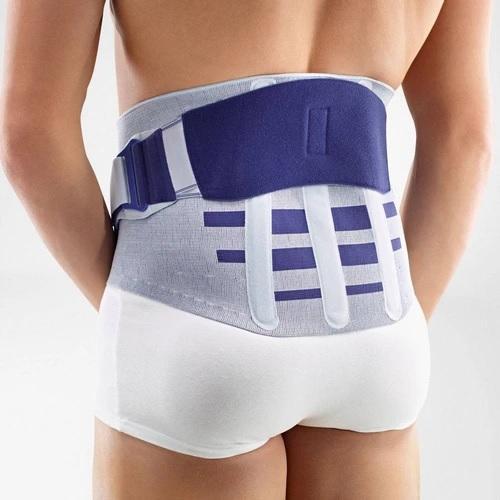Dowager's Hump, Hunchback, Kyphosis
Our back provides support and posture to our body and facilitates the transfer of power to the pelvis and the lower half of the body. The spine is a robust structure made of 24 vertebrae and protects the delicate spinal cord and spinal nerves.
Loss of bone density, poor posture, and muscle weakness can lead to changes in the spine. So-called wedge vertebrae are formed, which can lead to patients developing a curvature in their back, often referred to as Dowager’s hump.
The disease progressively gets worse, and in advanced cases, a patient’s spine is severely compromised, and mobility is restricted.
Causes of Dowager's Hump
A Dowager's rounded back is an increased curvature of the upper back (the Thoracic spine), formally referred to as hyperkyphosis. Some of the most commonly known factors that lead to the condition include:
- Prolonged lack of exercise and poor proprioception over the years can lead to the development of a dowager’s hump.
- Long periods of physically intense activity that include a stooped posture, for example, welders or manual labourers.
- Bad posture resulting from weak back muscles.
- Being overweight.
- Progressing age and long-term wear and tear.
- Osteoporosis is one of the major factors that causes a dowager’s hump. As the disease progresses, bone density decreases with age, leading to bone porosity and brittleness. The vertebrae, in particular, can then break even under mild loads. The vertebrae collapse, leading to a shortening and deformation of the spine with a visible curvature of the back.
- Injury from a fall or accident can also lead to a rounded back.
Dowager's Hump Symptoms
IA pronounced deformation of the upper body, i.e., developing a curvature of the back, can cause a wide range of symptoms. Some of the most commonly associated symptoms include an inability to maintain or assume an upright posture while standing or sitting.
Severely restricted mobility when trying to bend over or reach out with your arms.
Pain and discomfort under when bearing a load or strain.
In some more severe cases, the functioning of internal organs is impaired due to the added pressure on the organs from the unnatural curvature of the spine. For example, difficulty breathing occurs because the lungs can no longer expand to their full range. Similarly, digestive and cardiovascular complications can also occur due to this pressure.
As the disease progresses, the pain becomes more pronounced and can radiate to the arms or legs.
The condition can have debilitating effects on the psychological state of patients. It is common for patients to experience depressive moods as their quality of life drops.
In chronic cases of osteoporosis, the vertebrae can fracture, compromising the entire spinal integrity. Patients with a dowager’s hump due to osteoporosis are at high risk of further damage to the spine, and the curvature gets progressively worse with time and age.
Diagnosis of Dowager's Hump
A complete medical history and physical examination are good places to start, and they give the medical professional a good idea of the risk factors involved. Sophisticated imaging technology, such as X-rays, is used to study the integrity and condition of the spine.
It is generally essential to check for Osteoporosis and measure and track bone density. Doctors achieve this with the so-called T-value using X-rays.
According to the World Health Organisation (WHO) definition, Osteoporosis can be diagnosed if the T-value is at least 2.5 standard deviations below that of a healthy 30-year-old of the same sex. If the measurement results in a T value greater than -1, the bone density is in the normal range. Doctors may diagnose osteopenia or bone poverty if the T-value lies between -1 and -2.5. It is a preliminary stage of osteoporosis.
Dowager's Hump Prevention
Lack of exercise and poor posture are the main causes of hyperkyphosis. Regular physical exercise is, therefore, one of the most important preventive measures. In special courses, patients learn to correct their posture at work and to practice healthy proprioception.
Appropriate breathing techniques and relaxation techniques to increase breathing volume are also helpful. With a regular routine, patients can prevent a deformation in the upper body and the formation of a rounded back.
Treatment for Dowager's Hump
Treatment for hyperkyphosis is initially carried out conservatively. The aim is to relieve symptoms and prevent the progression of the condition. A practical guideline to follow includes:
Lifestyle Changes
Improving lifestyle choices can significantly improve the prognosis of Osteoporosis. Losing weight and avoiding drinking and smoking have proven effective in preventing the onset and progression of the condition. Having a nutritious, balanced, Calcium—and Vitamin D-rich diet is also highly effective.
Prescription Drug Therapy
Patients with a dowager’s hump experience pain and discomfort due to the condition. Prescribed painkillers like Ibuprofen can help manage the pain and provide some temporary relief.
Prescribed Physiotherapy
Prescribed physiotherapy, with the use of targeted exercise, can help strengthen the muscles in the chest and back. It allows a patient to regain mobility and help straighten the spine. Breathing exercises to increase the tidal volume and avoid shortness of breath caused by the curved spine.
Medical Back Brace
A medical back support/brace is strongly advised in conjunction with these treatments, as it helps correct posture and relieves pressure on the spine.
If the disease is early in its progression, a simple lower back support to correct posture may be all that is required; however, if the condition is more advanced, a more specific brace is usually required.
Surgical Intervention
If conservative therapy does not lead to an effective treatment of the issue, surgery may become necessary. It does, however, come with significant risks; in some advanced cases, there is a higher risk of long-term irreversible damage to the nerves and spinal cord.
This is especially true in the case of a hunched back resulting from osteoporosis. The inherent weakness of the bones can lead to vertebral fractures with a real risk of puncturing the spinal cord or spinal nerves. Surgery can help prevent this and also reinforce the spine to prevent further vertebrae from fracturing.
Surgery is only a last resort and should be thoroughly discussed with a doctor before proceeding.
Dowager's Hump Braces and Supports
Spinova Osteo
Bauerfeind offers a wide range of medical back braces that have proven instrumental in providing relief to patients, no matter how progressive the condition. Orthoses are often prescribed by surgeons, doctors, and physiotherapists for hyperkyphosis, vertebral fractures, and general weakness in the spine arising from osteoporosis.
For milder cases of Kyphosis where the symptoms are only just starting to show, a simpler brace like the LumboLoc Forte is effective at alleviating the symptoms and helping train the patient to adjust their posture.
The dual strapping system allows for targeted unloading of the vertebrae, while the interchangeable pads and anatomically contoured struts correct posture and relieve pain and discomfort.
If the back is already slightly rounded and there is a vertebral fracture, the Spinova Osteo is recommended. This orthosis straightens both actively and passively, suiting any lifestyle. An anatomically shaped aluminium splint encourages healthy proprioception and upright posture.
The brace is designed to fit the body using a tension belt system and offers deep-seated pelvic support, unloading from the hips up to the shoulders. This helps to bring the upper body into an upright posture and, in the event of incorrect posture, encourages straightening it up independently.
This trains the back muscles and counteracts the rounded back, and can be effective in mild cases of Dowager’s hump.
Patients using these orthoses have reported relief from symptoms and can help with a swift recovery, and have been extensively clinically tested to show their effectiveness.

